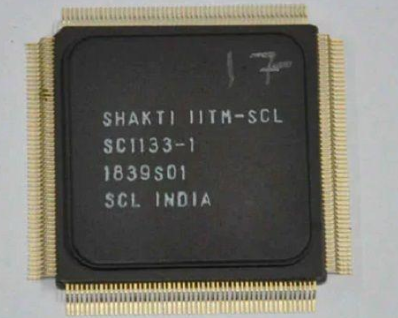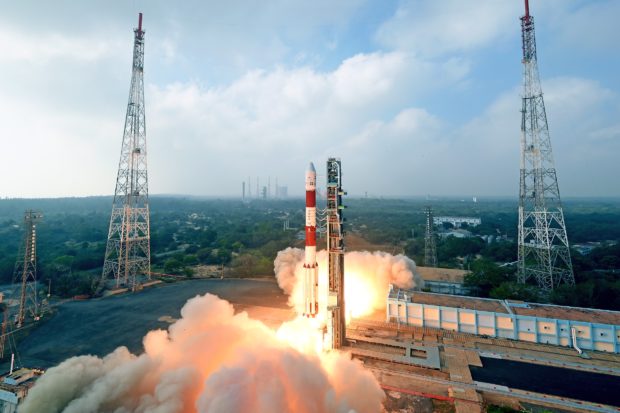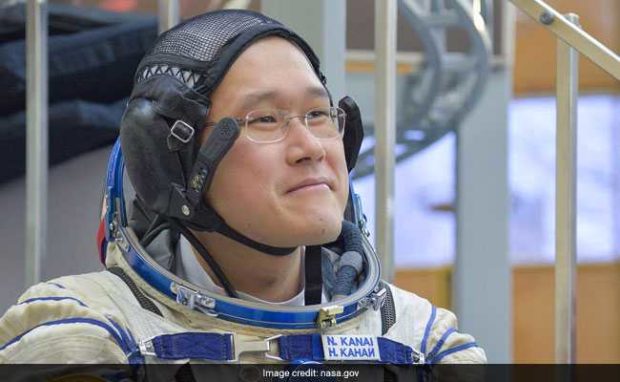TOP Science Achievements of India in 2019
Youtube Video in Hindi :
Youtube Video in Hindi :

Welcome to GAREEB SCIENTIST everybody . Today we will talk about India’s First Microprocessor SHAKTI . We will see how it compares to INTEL and ARM . We will also know why intel could be a potential friend .I have seen very low quality videos on this topic on YouTube . Aim to correct this now . Chaliye jaante he .
I spoke to Sir NEEL GALA who is the TECHNICAL LEAD for Shakti . He gave me lots of information on Shakti .Thank you Neel sir . This video has been long in the making . Continue reading

The world is getting flooded with tiny (creepy) robots that can crawl all over the place, including your clothes. The latest one, created by scientists at Harvard University, uses artificial scaly skins to move forward — kind of like a snake.
The soft robot is just a silicone rubber tube. But what’s special about it is its skin — a thin, stretchable plastic sheet that’s been cut with a laser. The cuts, in the shape of triangles or circles, resemble the scales on the skin of snakes. When Continue reading

NASA’s James Webb Space Telescope the world’s premier infrared space observatory of the next decade — has successfully completed critical testing in a massive thermal vacuum chamber, enabling it to function properly in the extremely cold and airless environment in space in 2019, the agency said.

To prepare for landing on the moon, the Indian Space Research Organisation will conduct landing simulation tests for Chandrayaan-2 spacecraft at Mahendragiri in coming weeks.

What seemed like an out-of-this-world claim has turned out to be just that.
Japanese astronaut Norishige Kanai apologized on Wednesday for suggesting he had “grown” 3.5 inches (9 centimeters) while at the International Space Station (ISS).
Kanai, 41, had only been on the ISS for a few weeks as part of a six-month mission when he tweeted he had some “important news” to share

Bengaluru-based aerospace start-up TeamIndus is scouting for funds and sponsors to build a spacecraft with a rover for landing and exploring the lunar surface.
“The total budget of the moon mission is about Rs 450 crore, out of which we have raised more than half (Rs 225 crore) and have spent. We’re trying to accumulate the rest through sponsors and others interested in this mission,” TeamIndus Fleet Commander Rahul Narayan told reporters here on Thursday. Continue reading
The Earth-sized planets orbiting the ultracool TRAPPIST-1 dwarf star 40 light-years away may have substantial amounts of water and could be habitable, scientists say. An international team of astronomers used the NASA/ESA Hubble Space Telescope to estimate whether there might be water on the seven planets orbiting in the nearby TRAPPIST-1 planetary. The results suggest that the outer planets of the system might still harbour substantial amounts of water. This includes the three planets within the habitable zone of the star, lending further weight to the possibility that they may indeed be habitable. In February this year, astronomers had announced the discovery of seven Earth-sized planets orbiting the ultracool dwarf star TRAPPIST-1, 40 light-years away.
This makes TRAPPIST-1 the planetary system with the largest number of Earth-sized planets discovered so far. Following up on the discovery, scientists used the Space Telescope Imaging Spectrograph (STIS) on the Hubble telescope to study the amount of ultraviolet radiation received by the individual planets of the system.
“Ultraviolet radiation is an important factor in the atmospheric evolution of planets,” said Vincent Bourrier, from the Observatoire de l’Universite de Geneve in Switzerland. “As in our own atmosphere, where ultraviolet sunlight breaks molecules apart, ultraviolet starlight can break water vapour in the atmospheres of exoplanets into hydrogen and oxygen,” Bourrier said. While lower-energy ultraviolet radiation breaks up water molecules – a process called photodissociation – ultraviolet rays with more energy (XUV radiation) and X-rays heat the upper atmosphere of a planet, which allows the products of photodissociation, hydrogen and oxygen, to escape. As it is very light, hydrogen gas can escape the exoplanets’ atmospheres and be detected around the exoplanets with Hubble, acting as a possible indicator of atmospheric water vapour. The observed amount of ultraviolet radiation emitted by TRAPPIST-1 suggests that the planets could have lost gigantic amounts of water over the course of their history. This is especially true for the innermost two planets of the system, TRAPPIST-1b and TRAPPIST-1c, which receive the largest amount of ultraviolet energy. “Our results indicate that atmospheric escape may play an important role in the evolution of these planets,” said Julien de Wit, from Massachusetts Institute of Technology (MIT) in the US. The inner planets could have lost more than 20 Earth-oceans-worth of water during the last eight billion years. However, the outer planets of the system – including the planets e, f and g which are in the habitable zone – should have lost much less water, suggesting that they could have retained some on their surfaces. The calculated water loss rates as well as geophysical water release rates also favour the idea that the outermost, more massive planets retain their water.
Credits : India today

Indian Space Research Organisation will soon launch a replacement navigation satellite fitted with corrected atomic clocks to make up for the crippled satellite,